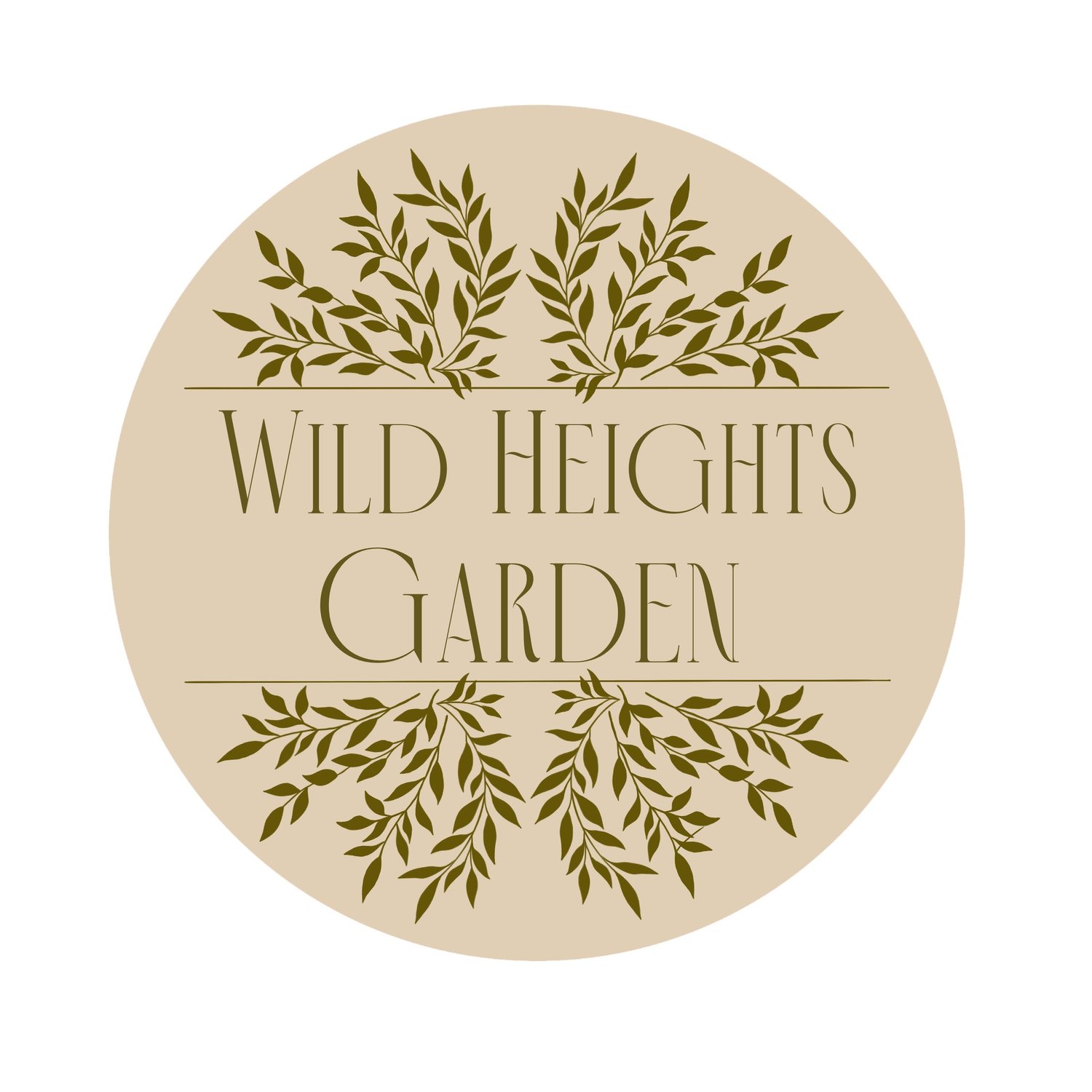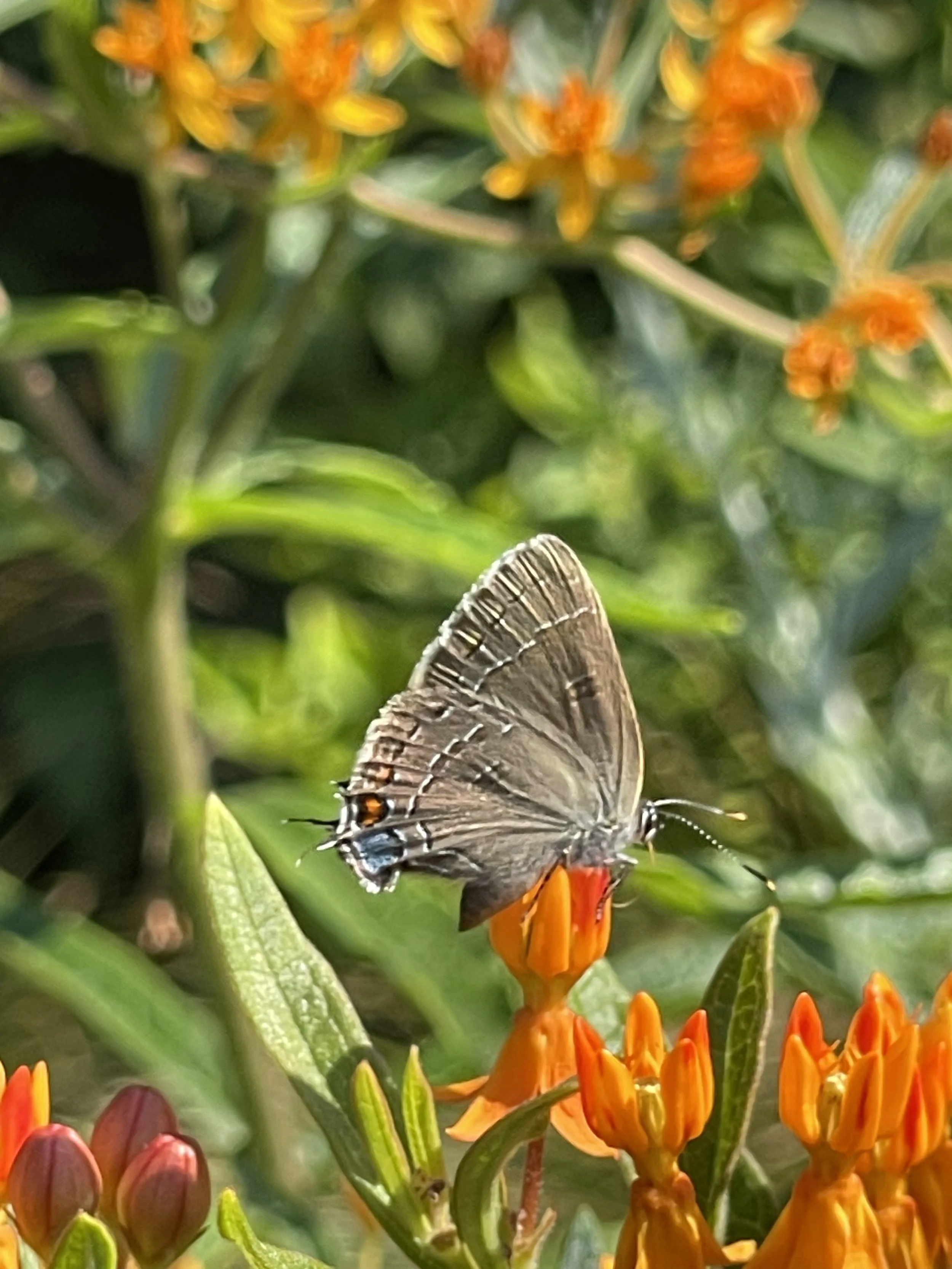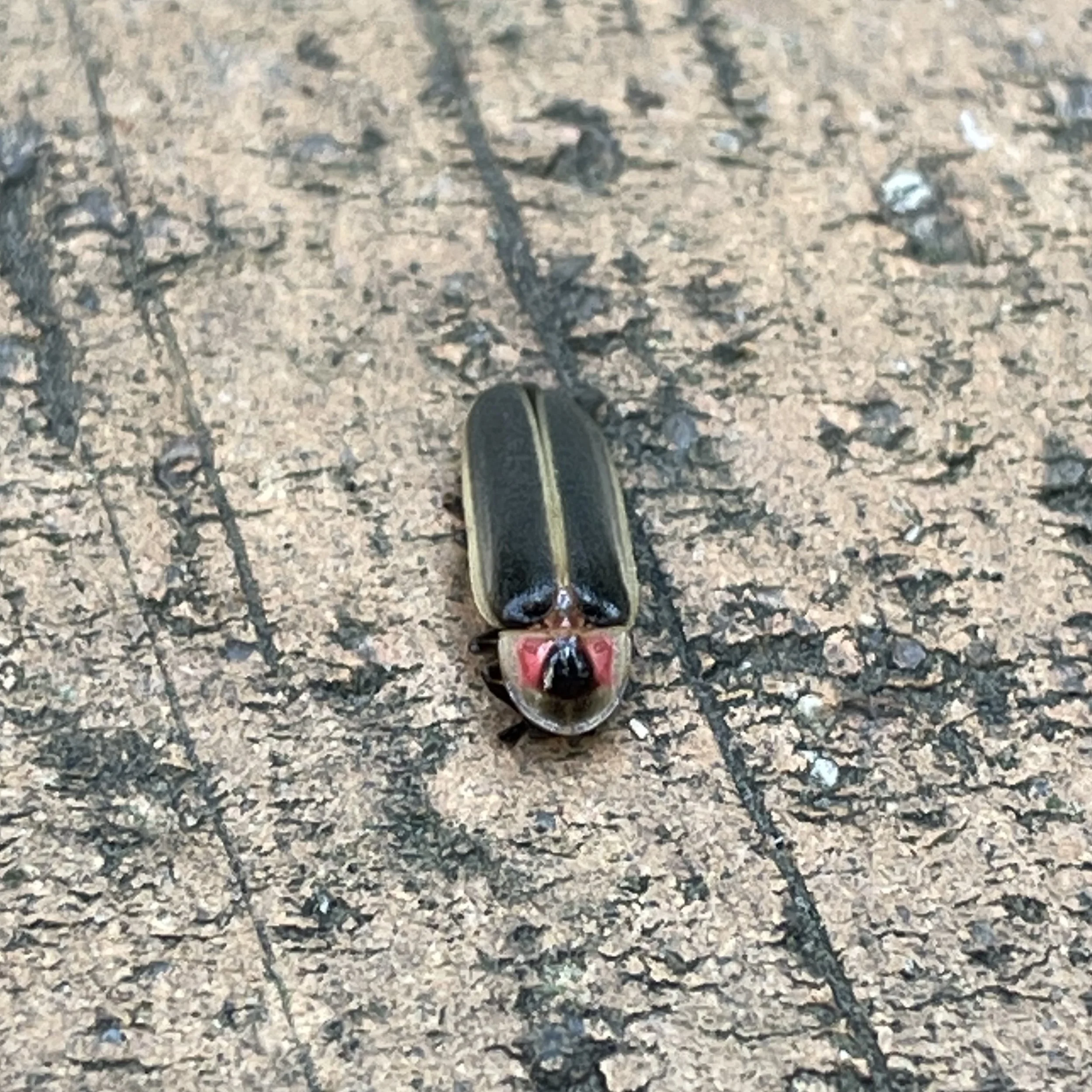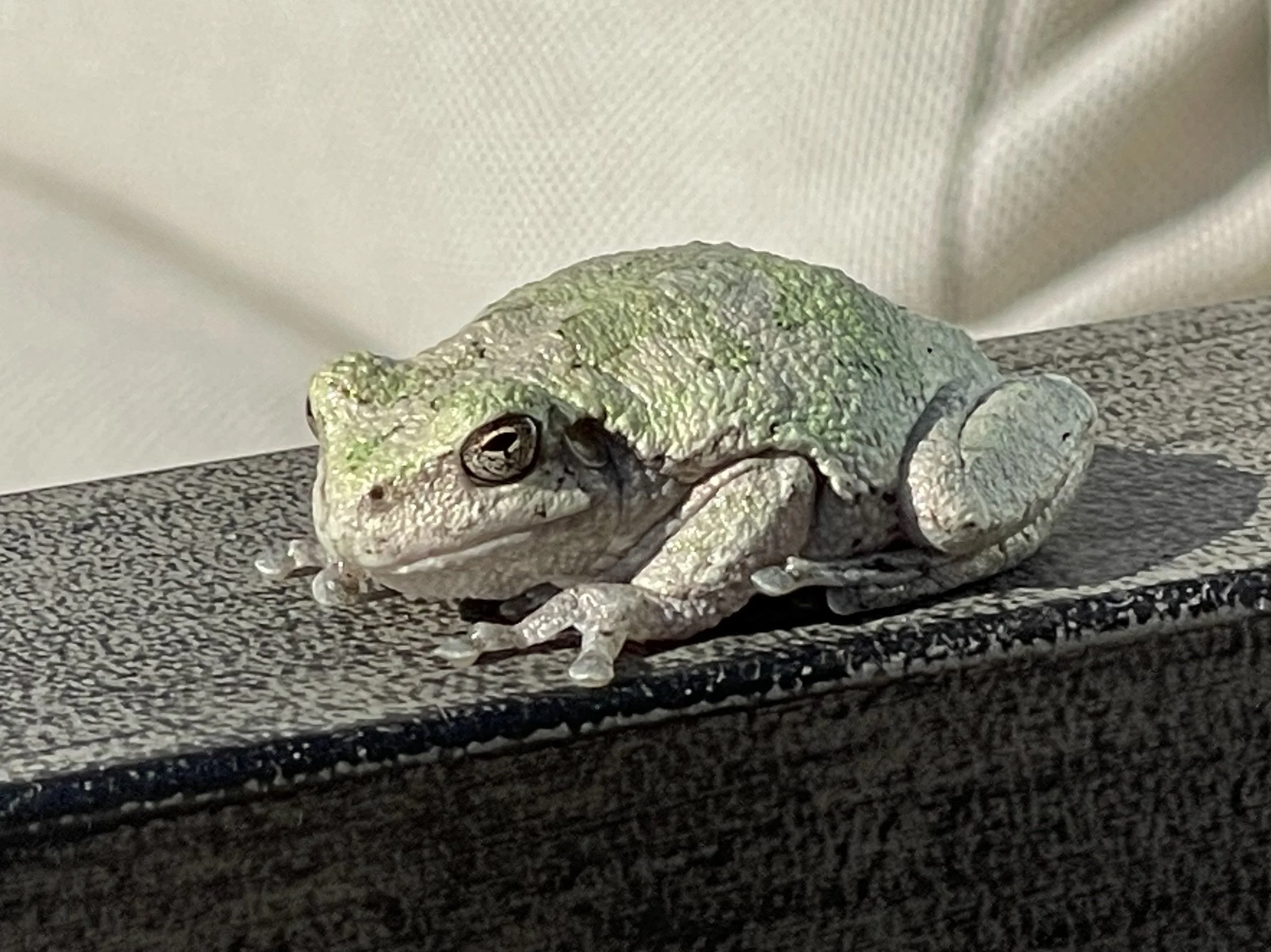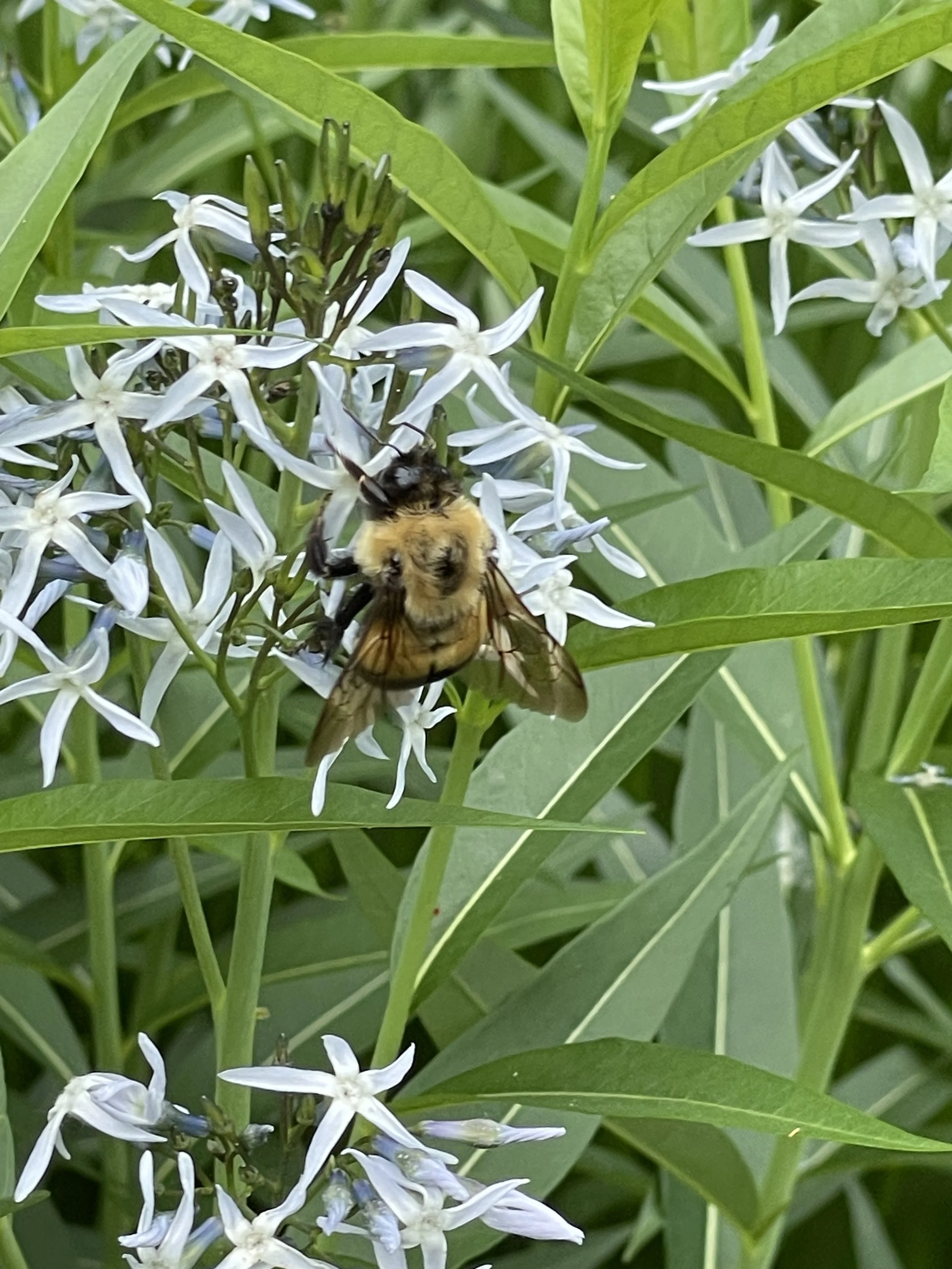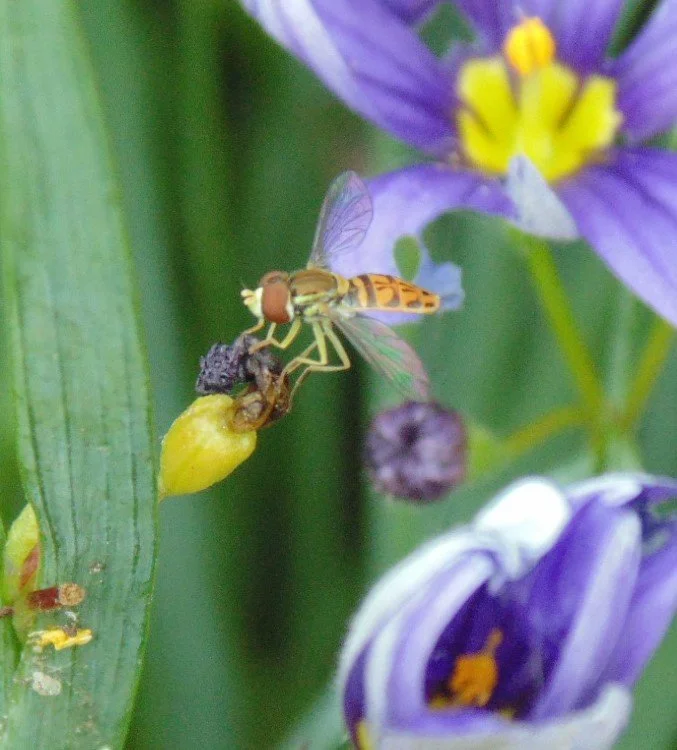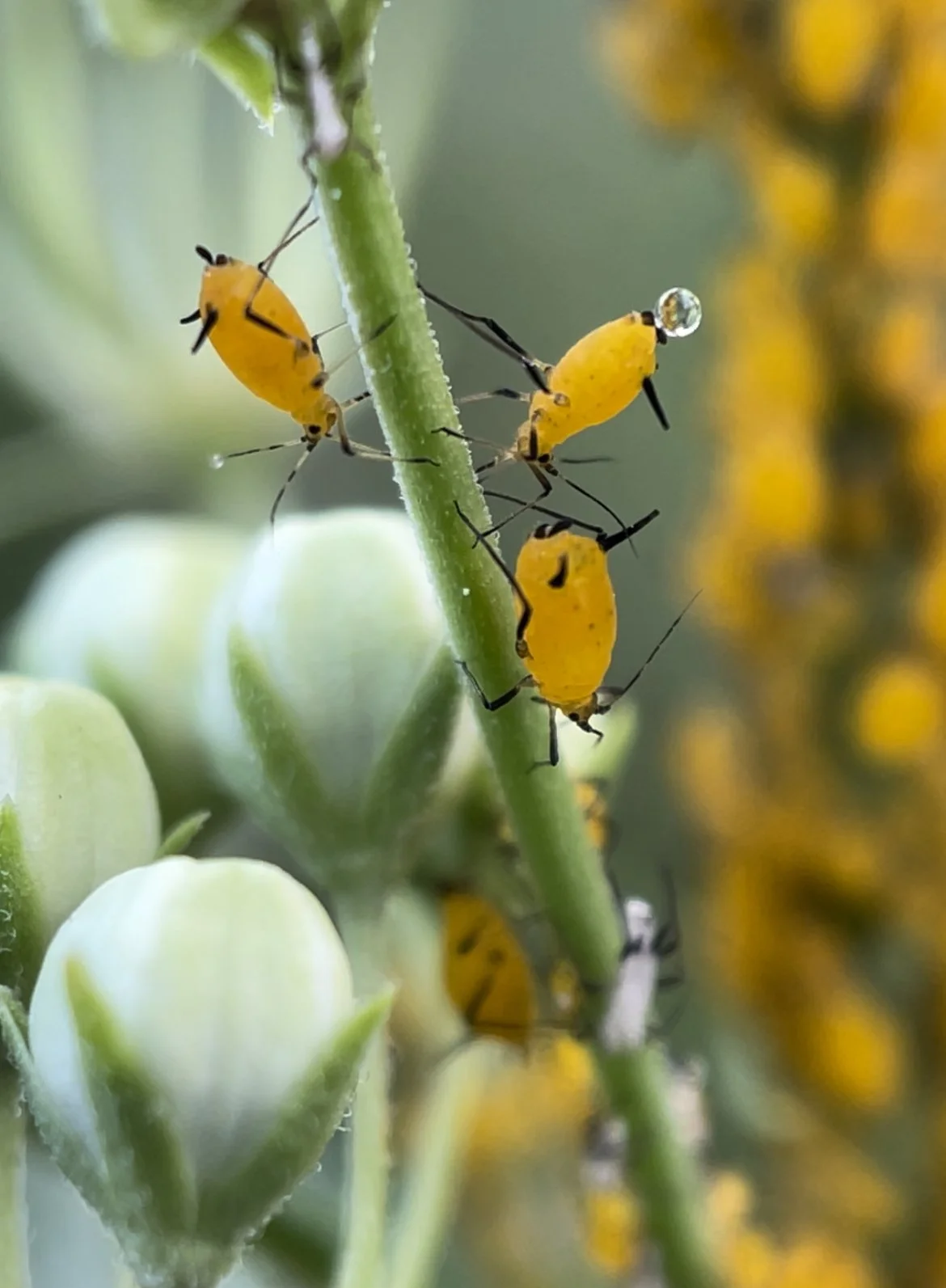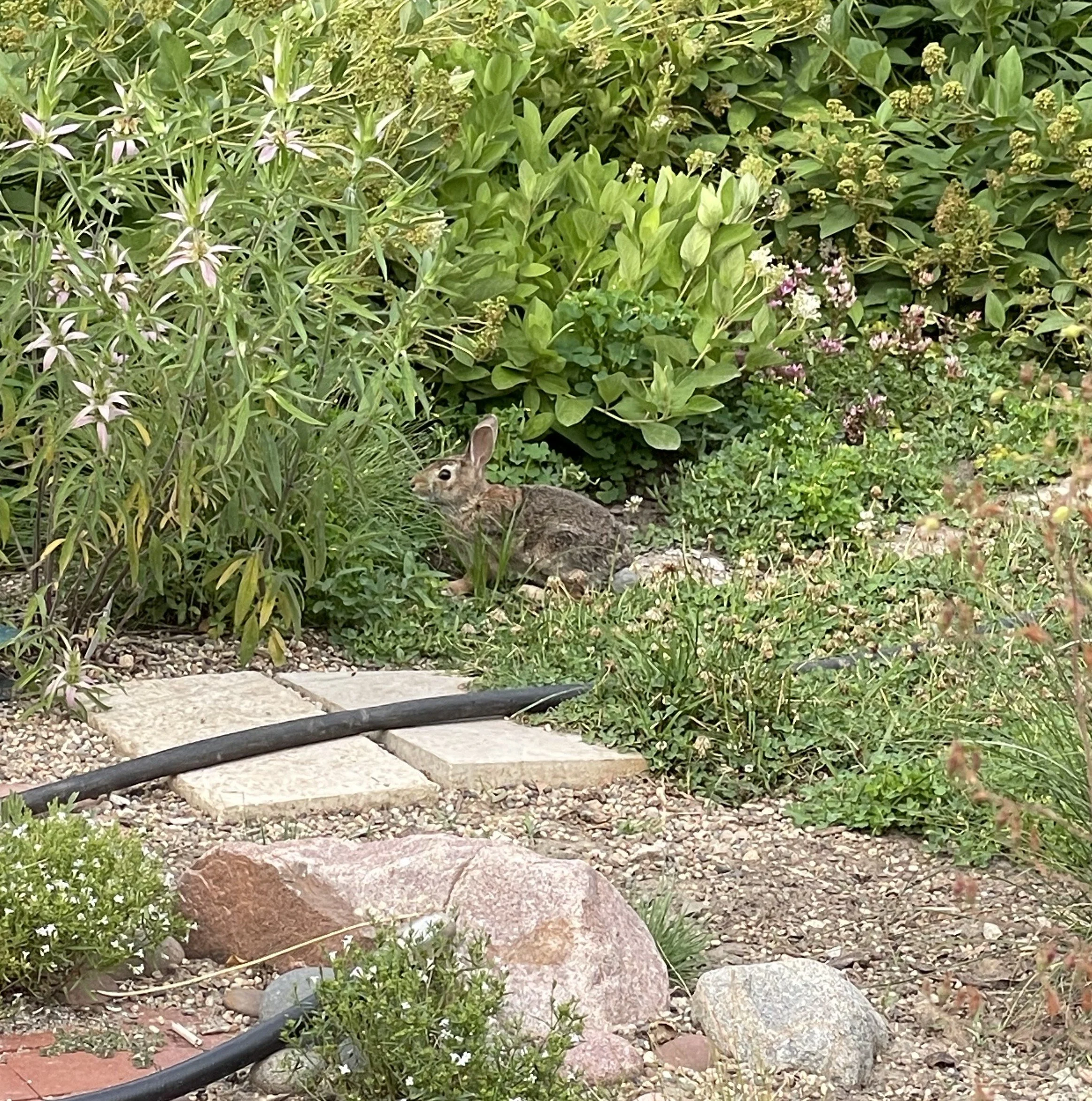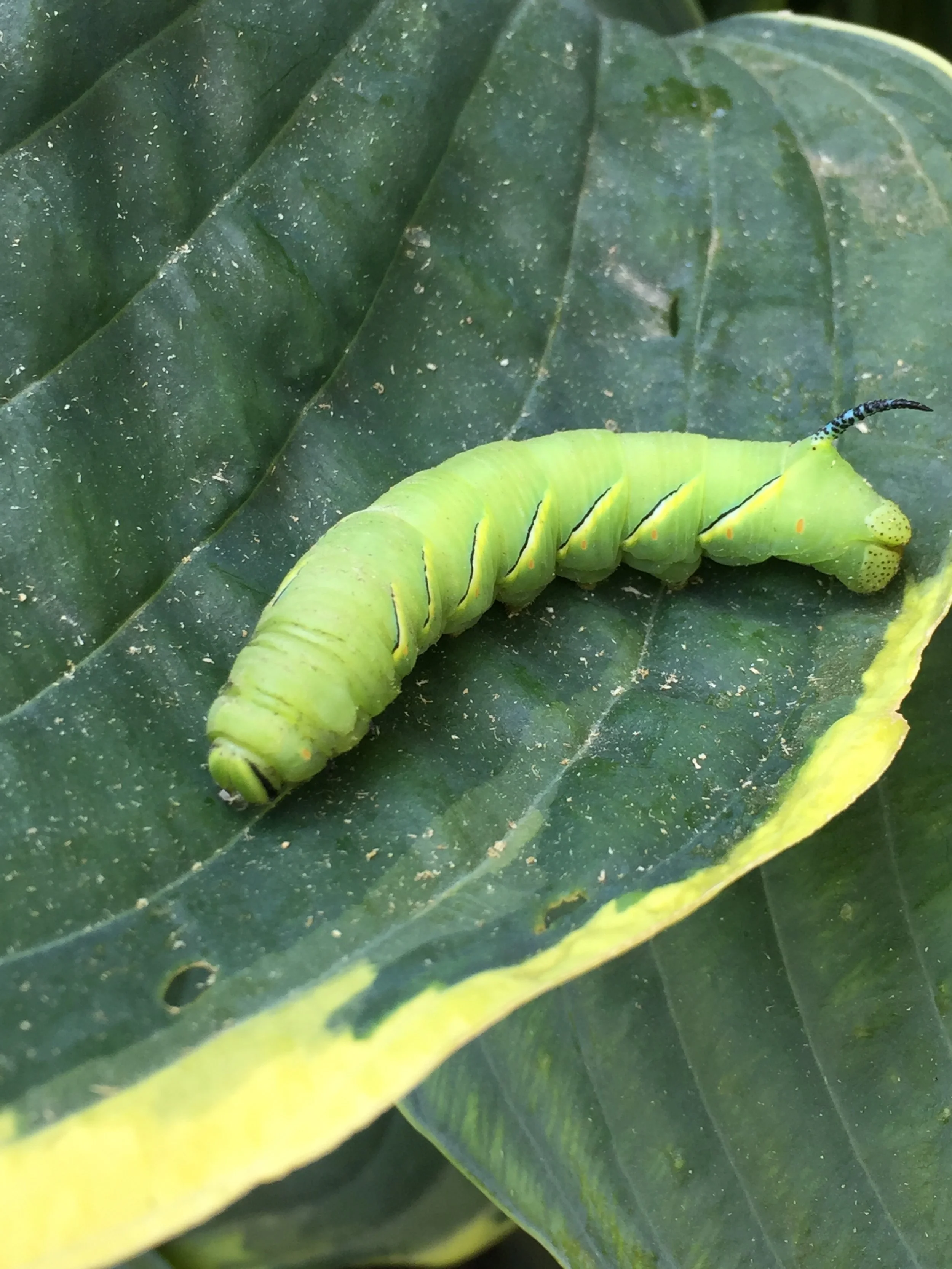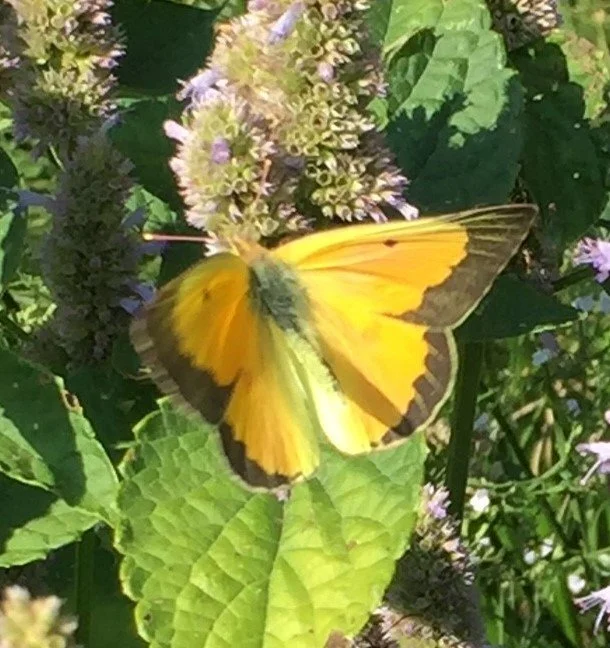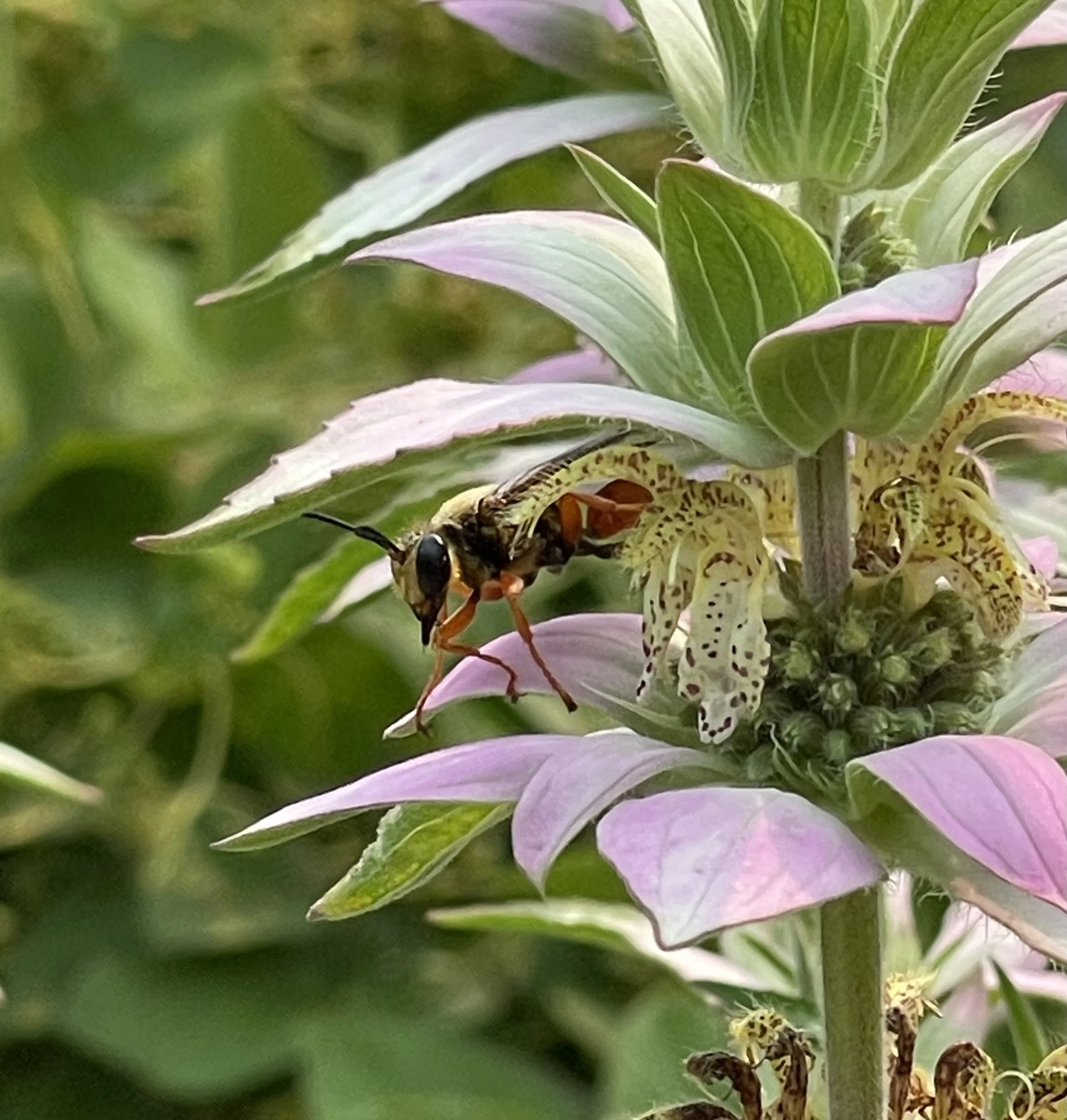Wildlife
-
Banded Hairstreak
This adult Hairstreak is nectaring on native Butterflyweed and has also visited New Jersey Tea flowers in the garden. Host plants for the caterpillar include Oaks and Walnuts which exist in the park/natural area just a few hundred feet to the north of the garden.
-
Shamrock Orbweaver
I came across this little beauty while I was doing some editing of New Jersey Tea shrubs in early fall. With a full egg sack and what looked like a stash of food I was worried I had endangered her and her future offspring. It was a reminder that even a little garden work can have large impacts on the small creatures with which we share the garden.
-
Common Eastern Firefly
Threats to this charismatic little flying beetle include light pollution, chemical use and lack of natural vegetation to conceal females and their offspring. Their bioluminescence is produced by a light producing enzyme luciferase which requires oxygen, luciferin and ATP to catalyze a light producing chemical reaction.
-
Gray Tree Frog
Couldn't help but feel a little intrusive when the couch cover was removed and I found this amazing creature. I can't help think she was giving me the stink eye for interrupting her nap.
We are fortunate to welcome these color changing frogs during mating season (May). They are drawn to our small natural pond to lay eggs and have more permanent homes in the 60 wooded park to the north of our garden.
While not everyone in the family enjoys their symphonies and crooning, for me I have no problem being lulled to sleep on cool spring nights with the windows open.
-
Rusty-patched Bumble Bee
I have to admit I was very excited to see this particular bumble bee in the garden. That being said there is a tinge of sadness in knowing they are on the federally endangered species list.
Their range has diminished significantly due to introduced pathogens, insecticide and fungicide use, habitat destruction and a number of other threats.
-
Oblique Streaktail
When I think of flies I usually think of the sometimes annoying common house fly. I'm learning that there are many, many different species of flies which fill many roles in the garden. This hoverfly is common in Minnesota and does provide pollination services. Its larvae is known for eating many different kinds of aphids.
http://www.minnesotaseasons.com/Insects/oblique_streaktail.html
-
Oleander Aphid
An introduced species whose ideal food source is Oleander which doesn't grow in Minnesota. Instead these little Aphids have taken a liking to Milkweed plants. Shown here on Whorled Milkweed. Because they suck the life juices from Milkweed they are toxic to most predators. One afternoon I set up the camera and watched the little suckers (literally) go about their business. The bubble on the aphid at the top of the picture is a sugar rich waste product called honeydew which pops off and floats to the ground. Apparently there are other folks in the neighborhood like ants who find these excretions very appetizing.
-
Eastern Cottontail
I feel I would be remiss if I didn't include the rabbits into this visual story. I have a love hate relationship with them (more love now). Primarily because I really love Purple Prairie Clover, a native wildflower with purple/pink blooms. I have planted many in the back garden but year after year the rabbits mow them down just when they are getting ready to flower. My efforts to keep them from the garden party, like installing chicken wire on the bottom 18" of the chain link fence have failed. So I have given up and welcomed them to the salad bar. I am happy that they like the white clover in the grass as it does keep them occupied and away from other of my favorites.
-
Laurel Sphinx Moth Caterpillar
This caterpillar was likely coming from one of its host plants the Common Lilac which is nearby in the neighbors garden. It may have been searching for some loose soil cover in which to pupate. I really enjoyed the subtle coloring and the long blue horn which is covered in spikes, presumably to ward off predators like birds looking for food to grow their offspring. If you look close enough you can make out the orange dots on the side of each each body segment which are breathing pores. Where do these creatures live if the soil is covered with landscape fabric and rock, or turf grass?
-
Orange Sulphur Butterfly
While the Orange Sulphur’s are common to many habitats in Minnesota they are hard to catch a picture of with their constant movement. This adult butterfly is pictured here nectaring on native Blue Hyssop.
Larval host plants include White Clover which is readily available in our turf grass. Do we really need to use deadly chemicals to keep our lawns pristine and weed free at the expense of having these beautiful creatures to live alongside?
-
Great Golden Digger Wasp
Shortly after I planted the Spotted Beebalm (pictured above) in the back garden I noticed a number of different wasp species feeding on the nectar. This Golden Digger is a solitary wasp which creates a nest with several cells in sandy soil and provisions each cell with a single prey, usually a grasshopper or katydid.
These and other wasps love the long blooming Spotted Beebalm but have no interest in interacting with humans and I’ve never had any issues with living in close proximity to them.
-
Green Darner Dragonfly
This female Green Darner was sunning itself on the foliage of the Arborvitae hedge. The skilled aerial predators (also called mosquito hawks) eat many kinds of flying insects such as flies, gnats, mayflies and mosquitos.
While most Green Darner’s migrate south for the winter some do overwinter as naiads in frozen ponds.
-
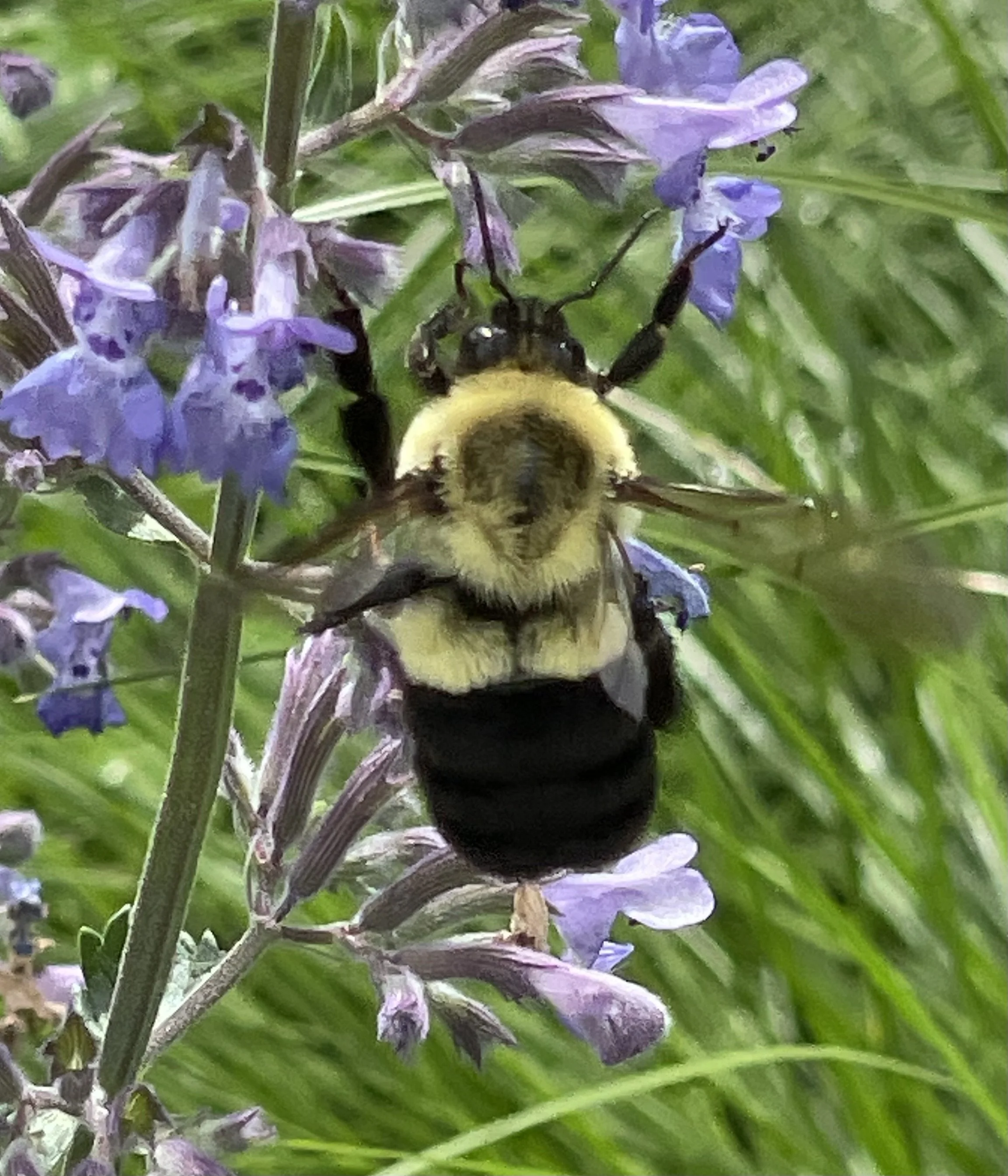
Common Eastern Bumblebee -Bombus impatiens
Here seen nectaring on non-native Nepeta ‘Walker’s Low’, most bumblebees are generalists when it comes to foraging for nectar and pollen. Their furry coats are unique for insects and their purpose is, as you might have guessed for warmth and insulation.
-
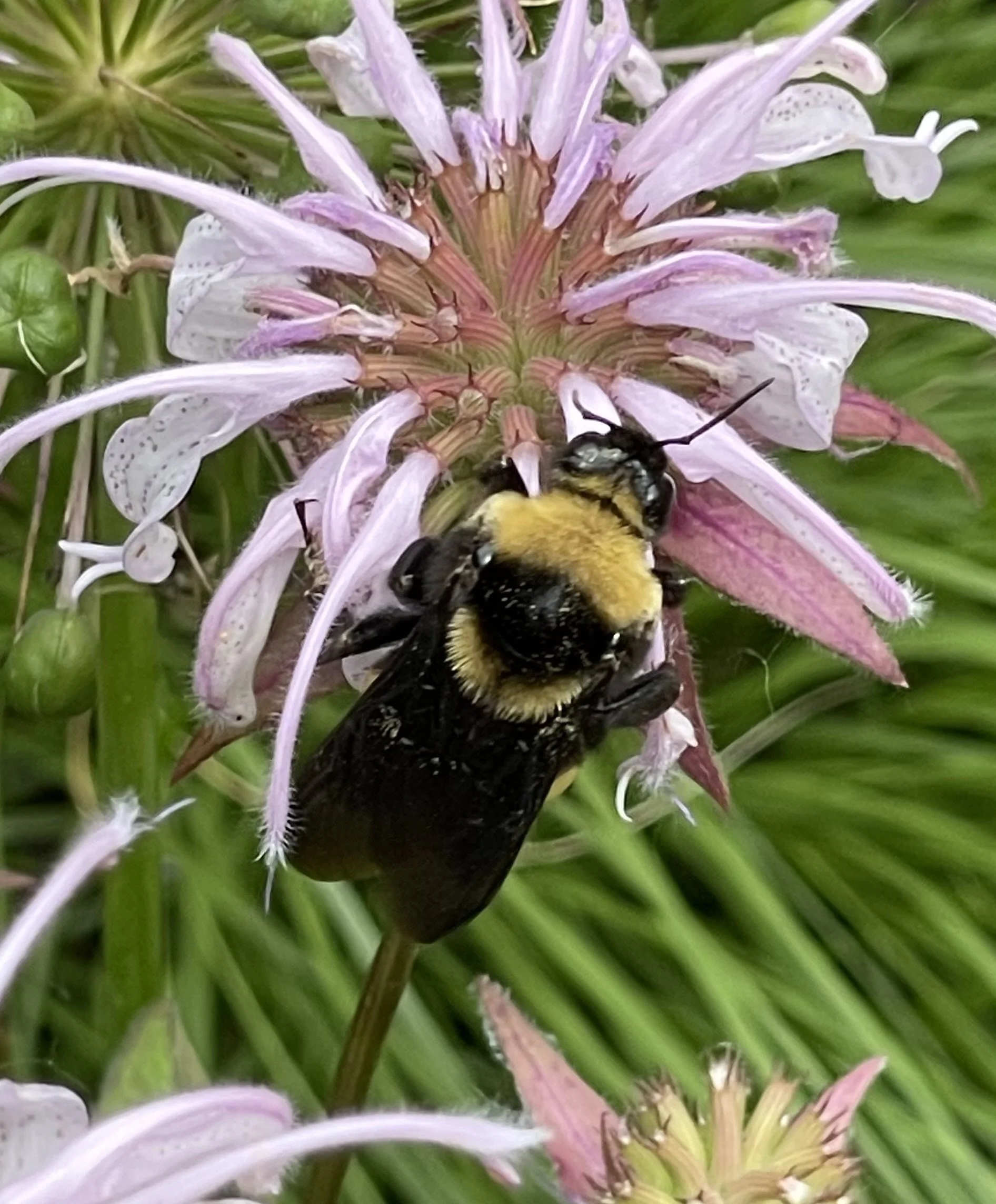
Black and Gold Bumblebee - Bombus auricomus
Bumblebees nest in the ground but are unable to dig their own cavities so they rely on existing cavities such as old rodent burrows. In the spring the queen builds waxen pots with she outfits with pollen and subsequently lays her eggs upon. This Black and Gold Bumblebee is nectaring on Monarda bradburiana.
-

Brown Belted Bumblebee - Bombus griseocollis
The Brown Belted is another common bumblebee in the upper midwest. If you are interested in wildlife preservation in your garden it is good to check the area you are working for activity before digging or disturbing the soil. Here again the Brown Belted is nectaring on Nepeta ‘Walker’s Low’.
-
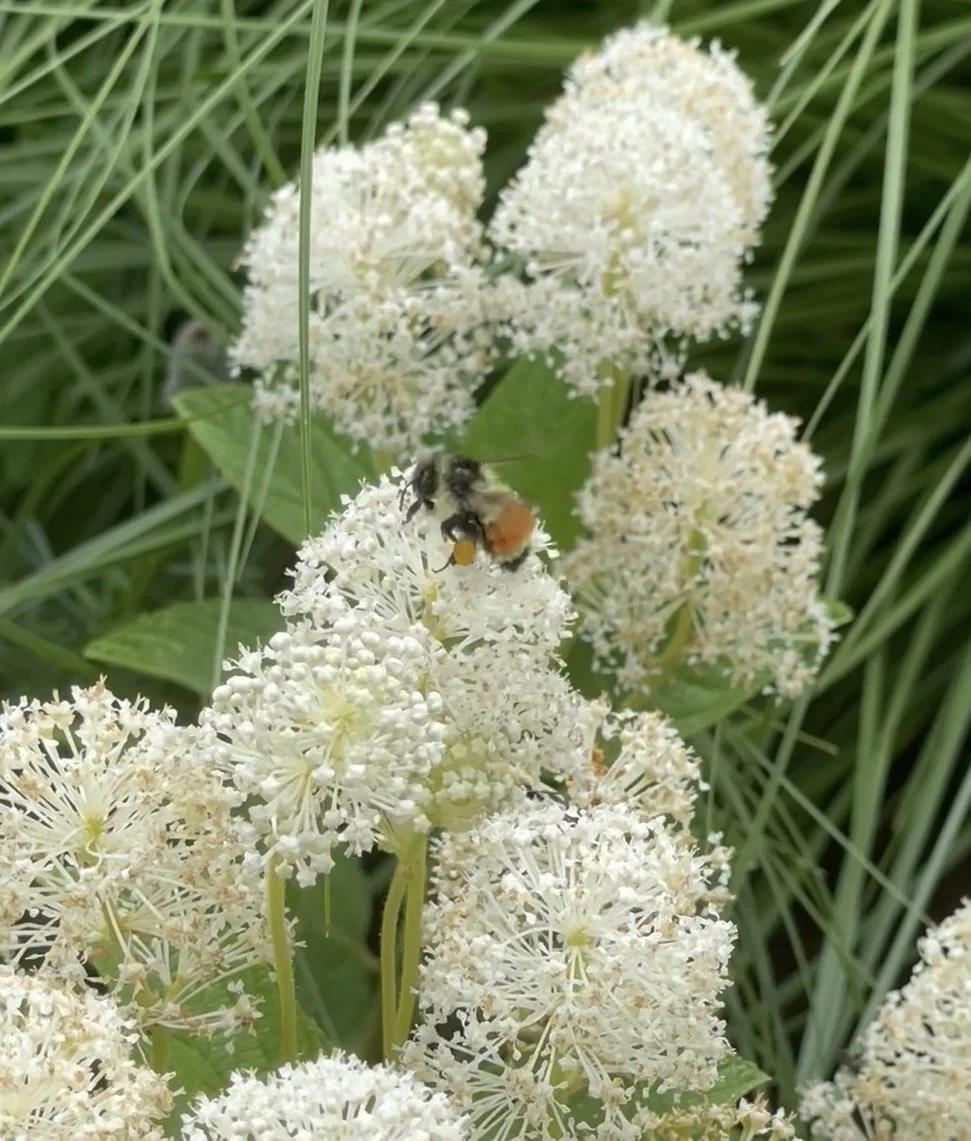
Tricolored Bumblebee -Bombus ternarius
Also known as an Orange Belted Bumblebee this common bee is certainly one of the showiest to grace our garden. It is visting New Jersey Tea flowers in mid-summer.
-
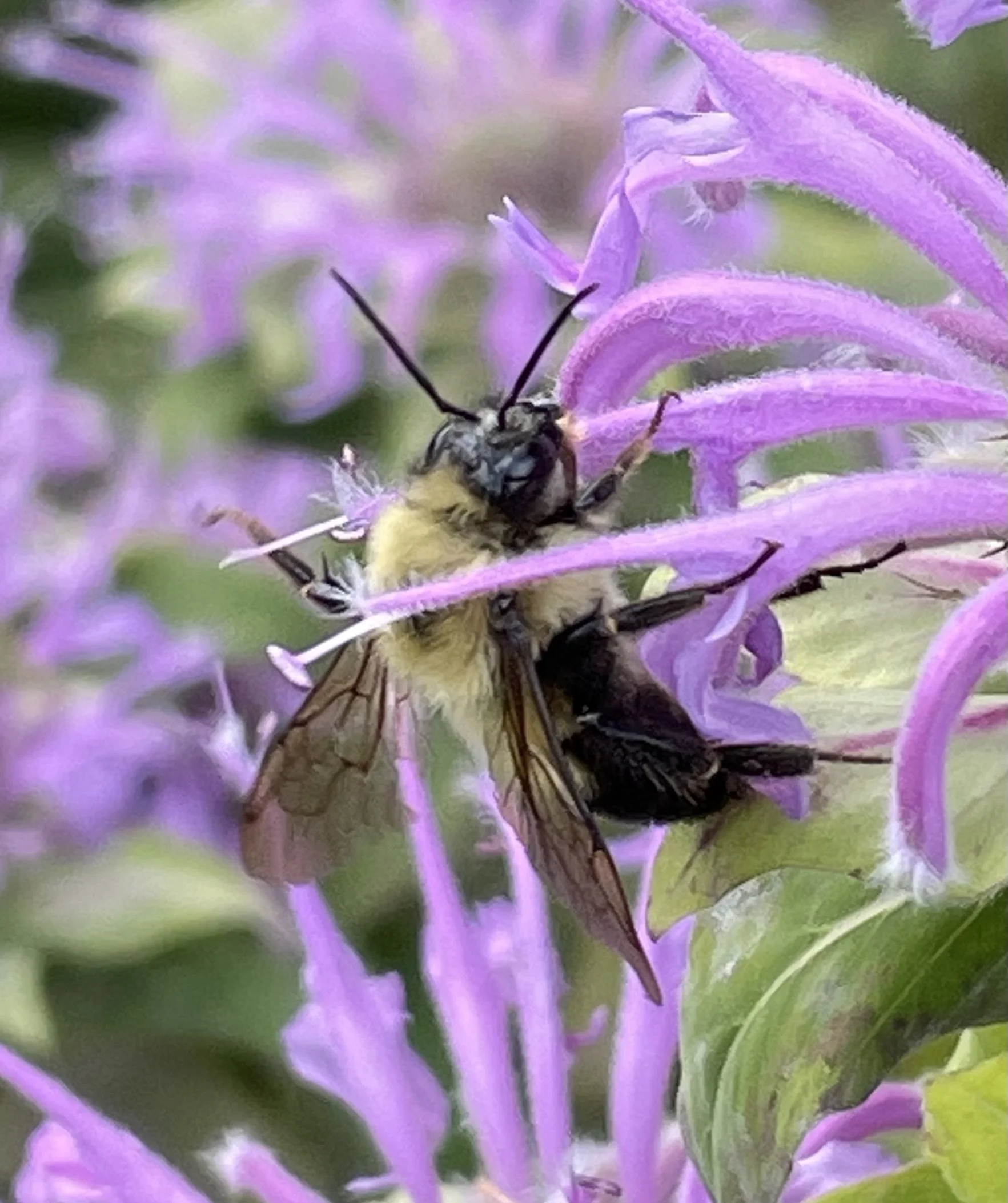
Two-Spotted Bumblebee - Bombus bimaculatus
One of the first queens to emerge from hibernation in the spring. Predators of bumblebees include crab spiders, ambush bugs, robber flies dragonflies, some wasp species and assassin bugs. Photographed here on Monarda bradburiana.
-
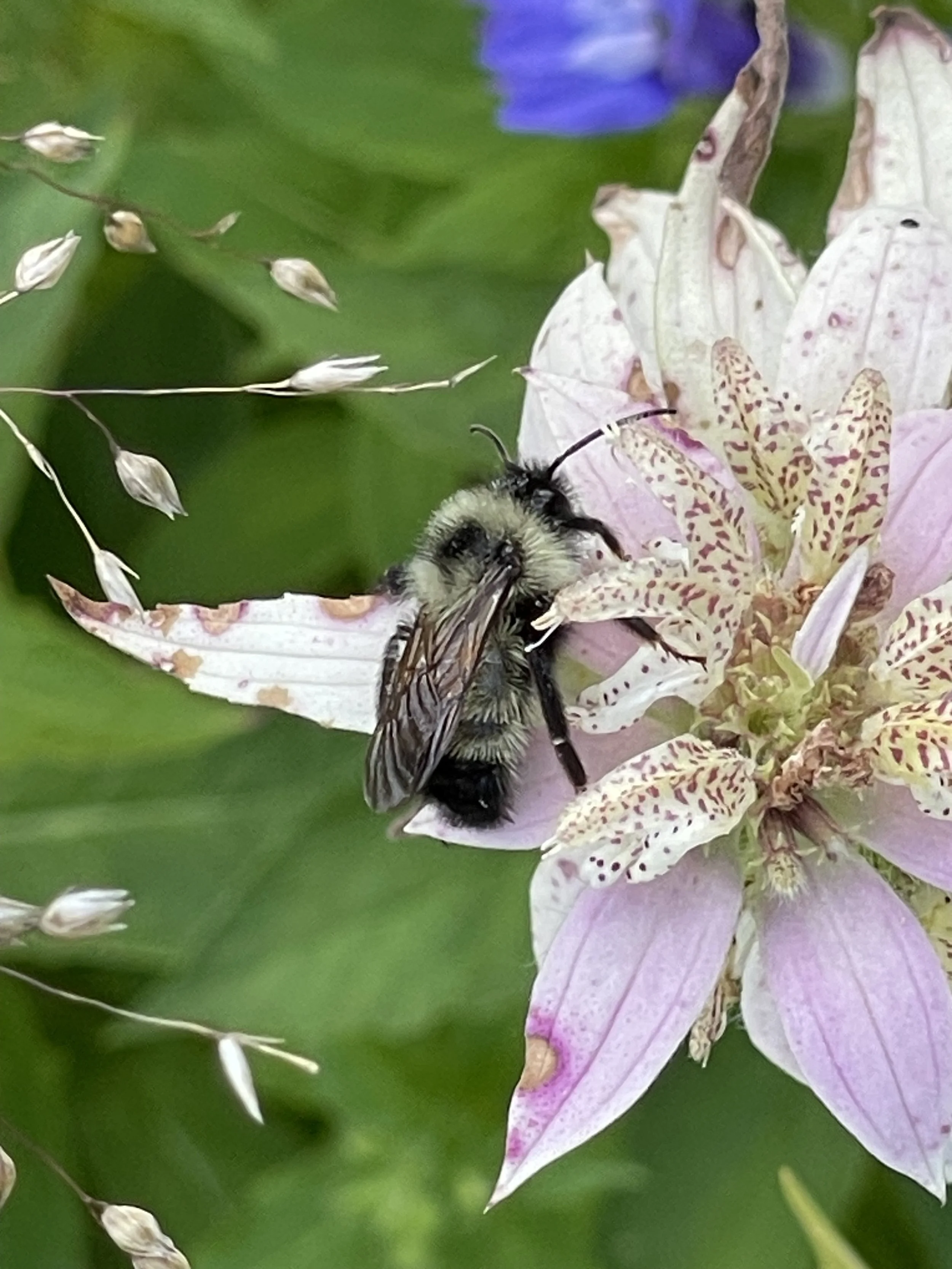
Lemon Cuckoo Bumble Bee - Bombus citrinus
This bee species has lost its ability to collect and store pollen as well as their ability to raise their young. Because of this they must invade the nests of other bees (typically two spotted or common eastern bumble bees) and force the colony to rear its young for them. It is seen here nectaring on spotted bee balm - Monarda punctata.
